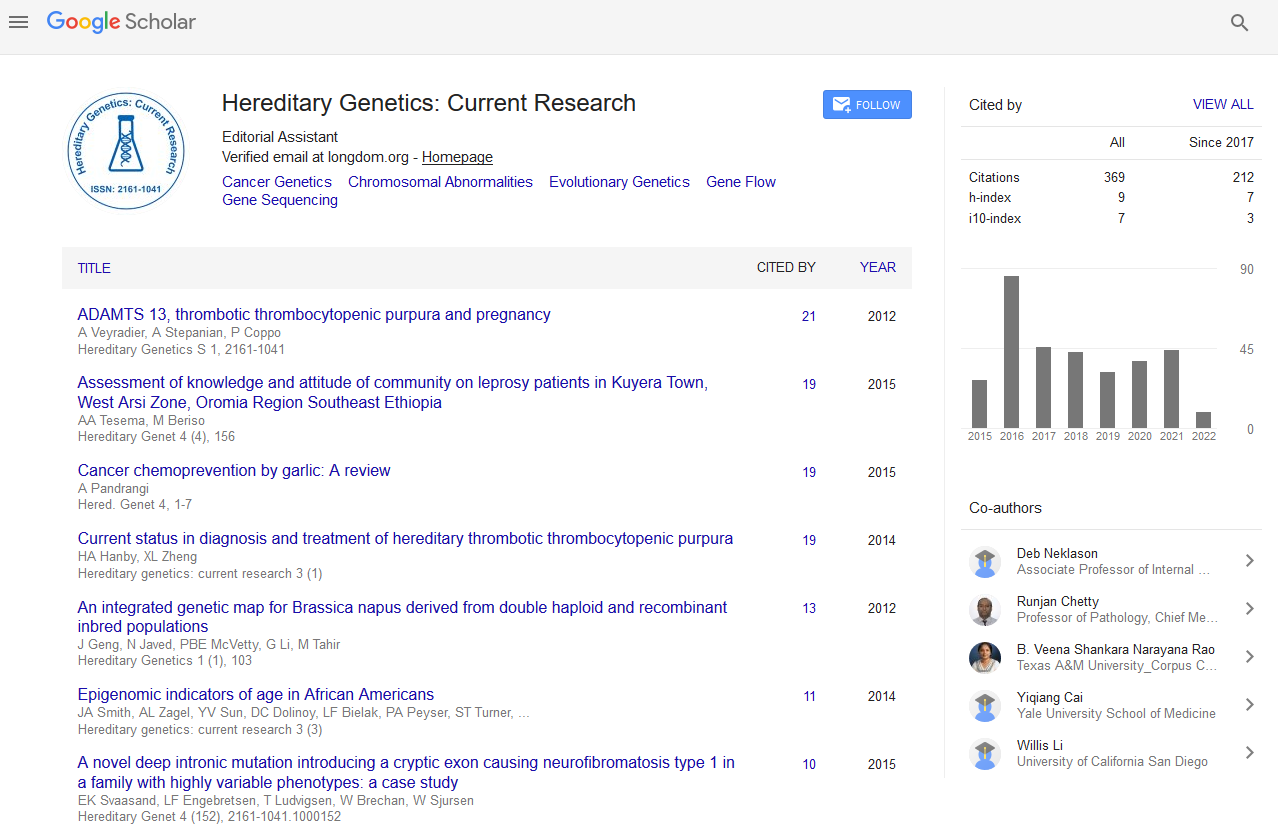PMC/PubMed Indexed Articles
Indexed In
- Open J Gate
- Genamics JournalSeek
- CiteFactor
- RefSeek
- Hamdard University
- EBSCO A-Z
- NSD - Norwegian Centre for Research Data
- OCLC- WorldCat
- Publons
- Geneva Foundation for Medical Education and Research
- Euro Pub
- Google Scholar
Useful Links
Share This Page
Journal Flyer

Open Access Journals
- Agri and Aquaculture
- Biochemistry
- Bioinformatics & Systems Biology
- Business & Management
- Chemistry
- Clinical Sciences
- Engineering
- Food & Nutrition
- General Science
- Genetics & Molecular Biology
- Immunology & Microbiology
- Medical Sciences
- Neuroscience & Psychology
- Nursing & Health Care
- Pharmaceutical Sciences
Abstract
Genetic Complexity of Human Myelomeningocele
Myelomeningocele (MM) is the most severe form of lumbosacral open neural tube defect (NTD) compatible with survival and it results in various degrees of disability. Approximately 4 in 10,000 live births are affected in the United States (US). Mexican Americans, the fastest growing ethnic population in the US, have the highest prevalence rate for NTDs follows by Caucasian Americans. Occurrence of MM represents a significant economic and public health burden in the US. Both genetic and environmental factors contribute to the development of MM. The genetic contribution to NTD is complex. Over 205 genetic loci are implicated in mouse mutants and strains. Majority of mouse NTDs affect the rostral CNS and only a handful present only spina bifida. In contrast, the genetic variability and molecular mechanism(s) in the development of MM in humans are largely unknown. The contribution of de novo mutations to MM
in humans is unknown and can be determined by characterizing the variations present in the exomes of MM affected individuals. Whole exome sequencing is a cost-effective and efficient tool to discover rare variants of large effect as well as the entire site frequency spectrum of variations in the exomes to establish disease association. In addition, sequencing of the regulatory elements in the genomes of MM affected individuals can discover rare variants that may affect expression of genes critical to the normal development of the neural tube


